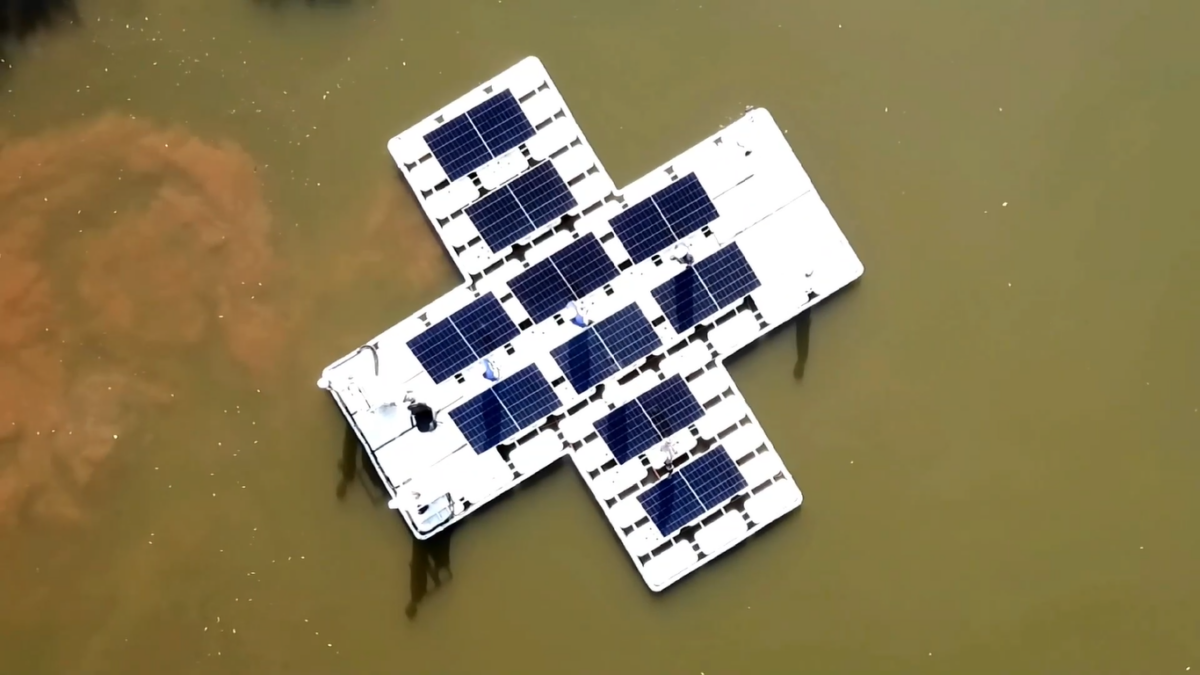From pv magazine Brazil
A consortium led by Apollo Flutuantes has energized a floating PV system on a lake located in Estancia Jatobá, near Campinas, in the Brazilian state of Sao Paulo.
The system is being operated under the country's distributed generation (DG) scheme and sells excess power to the local grid.
The 69o W bifacial installation is equipped with a tracking system and rotates from East to West following the sun to maximize energy generation. It relies on solar modules provided by AE Solar.
“From the beginning, AE Solar carried out tests and discovered something that not even we knew, that the floating Apollo technology has an excellent albedo, of at least 17%,” the CEO of Apollo, José Alves Teixeira Filho, said.
The project also functions as a demonstrator for the standard 7 MW system developed and patented by Apollo, which is 180 meters wide by 280 meters long, with 9,000 bifacial modules. The system weighs approximately 1,200 tons floating, with a further 396 tons submerged for anchorage.
“It may seem simple, just a buoy, but it’s not. This ‘buoy’ has to last 30 years,” said Teixera Filho, noting that the interdisciplinary nature of the technologies requires the presence of several partners.
The idea of the consortium is to offer these units both to hydroelectric plant operators who want to hybridize their assets and to companies in the distributed generation segment.
“Exclusively for floating photovoltaics, it is allowed to build large plants installed, for example, with 300 MW on a lake, electrically sliced into 300 slices of up to 1 MW and negotiate this energy as distributed generation, directly with the end customer, which is prohibited for ground installations,” he also said. “This provides economic gains for floating plants very quickly. Just to give you an idea, a R$2 billion project has a payback period of less than three years,” he added.
He refers to Law 14,300, which in Brazil prohibits the division of a generating plant into smaller units to comply with the power limits for microgeneration or distributed minigeneration, except for floating plants, as long as each unit observes the maximum installed power limit.
Teixeira says that one of the models being studied by hydroelectric plants, in addition to the opportunity for hybridization, is to transfer parts of their reservoirs for exploration by other distributed generation companies, which can benefit from gains in scale and exploit the assets as distributed generation.
This content is protected by copyright and may not be reused. If you want to cooperate with us and would like to reuse some of our content, please contact: editors@pv-magazine.com.



1 comment
By submitting this form you agree to pv magazine using your data for the purposes of publishing your comment.
Your personal data will only be disclosed or otherwise transmitted to third parties for the purposes of spam filtering or if this is necessary for technical maintenance of the website. Any other transfer to third parties will not take place unless this is justified on the basis of applicable data protection regulations or if pv magazine is legally obliged to do so.
You may revoke this consent at any time with effect for the future, in which case your personal data will be deleted immediately. Otherwise, your data will be deleted if pv magazine has processed your request or the purpose of data storage is fulfilled.
Further information on data privacy can be found in our Data Protection Policy.